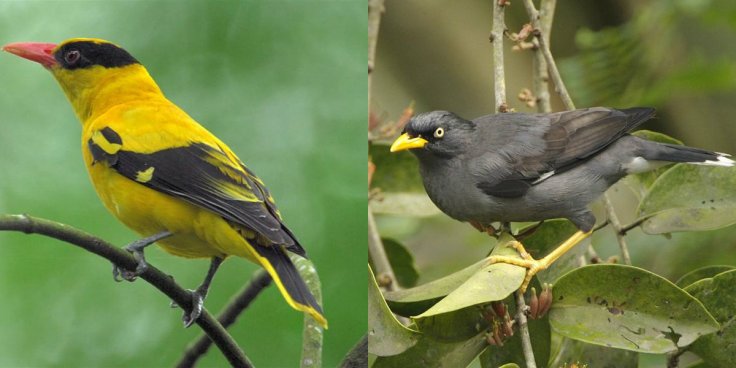
Three wild birds were stuck in glue traps on Saturday morning at a housing estate in Toa Payoh. Two large glue traps had been set at the deck of Block 156 Lorong 1 Toa Payoh, which managed to ensnare two adult Black-naped Orioles and one adult Javan myna.
The traps were baited with bread and Cheezels were scattered about nearby, which had lured the unsuspecting birds there. The Javan myna was stuck to the gruesome trap with its feet up in the air and its back attached to the glue. The sight is enough to anger environment lovers and anyone with a shred of compassion.
The birds were found by residents at around 9 AM on Saturday, when they were clinging on to life. A resident alerted Animal Concerns Research and Education Society (ACRES) which sent a rescue team.
The birds were taken to an ACRES' animal rescue centre, where the glue was removed with oil. It is unknown who laid these traps.

Predominantly, glue traps are used to catch rodents such as rats and mice, putting them to slow death. They are available for a meagre amount in Singapore and are used frequently by residents. However, in recent times, these traps are being used to snare birds, squirrels and even snakes.
"Glue traps are inhumane and cruel, leading to a slow, painful death for any animal that gets trapped," Anbarasi Boopal, deputy chief executive of ACRES, told Coconuts Singapore. Often, birds lose feathers and sometimes their ability to fly after being stuck in glue. These devices are banned in countries like New Zealand and Ireland.
Generally, residents use these traps to lure what they consider 'nuisance birds' as they "are attracted to food sources." However, Boopal makes it clear that eliminating these birds mercilessly is not the solution to this problem.
This is not the only form of torture that humans inflict on birds. The winged beings are affected by other human activities like deforestation, pollution, flying kites, and many more. Recently, a study discovered that birds are losing their ability to produce stress hormones and save their lives during emergencies due to excessive noise pollution.









